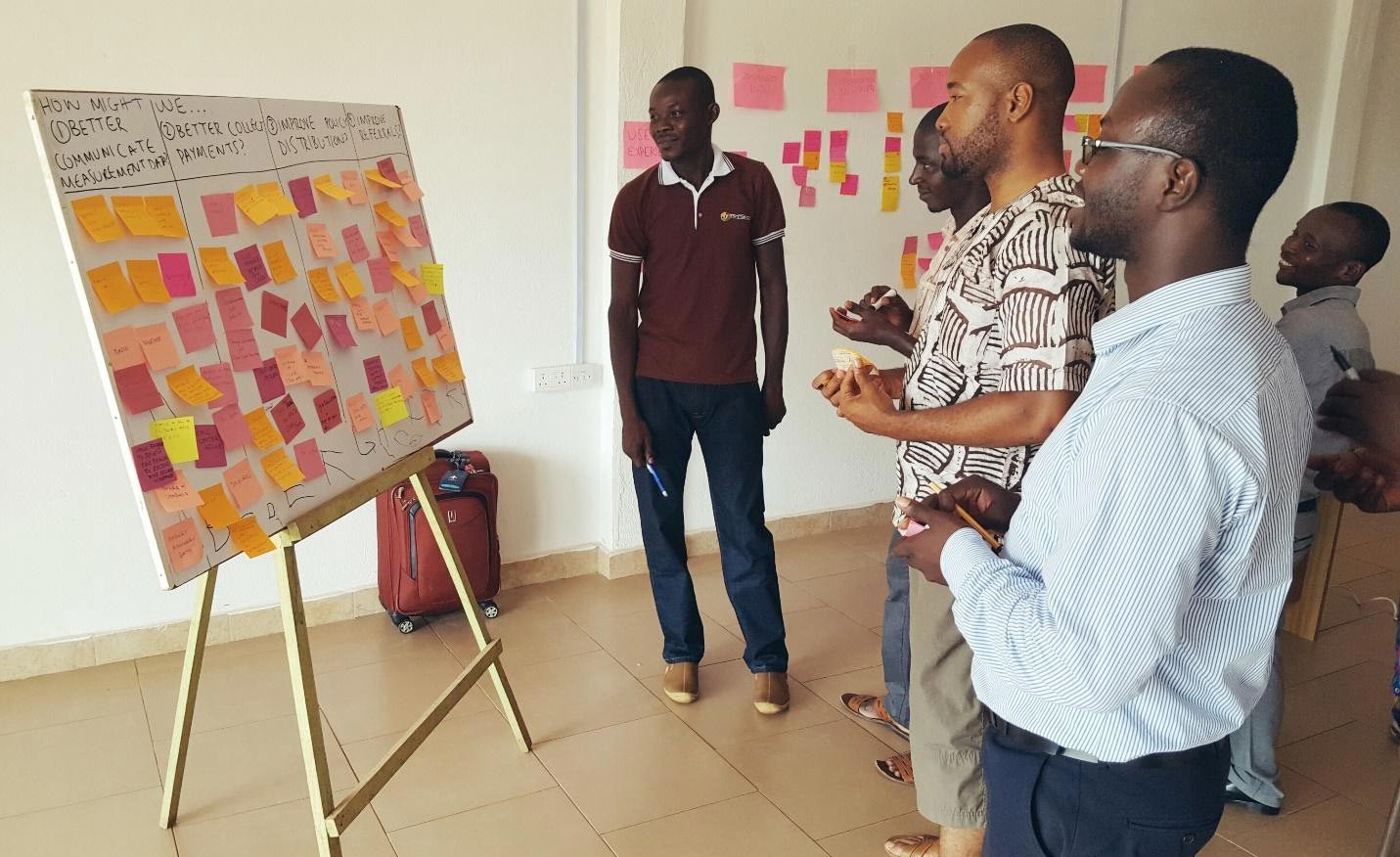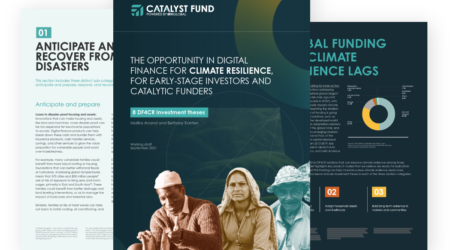How Do We Increase Trust and Engagement in the Low-Income Customer’s Journey?
A Holistic Service Blueprint for Financial Services

In today’s radically changing business landscape, the customer experience is important. We know that companies that deliver holistic customer journeys outperform those that only focus on optimizing the experience at individual touchpoints. Customer experience is a powerful and effective way for companies to distinguish their brands from competitors. Creating a unique customer journey means identifying what customers want and what they experience on their customer journeys before translating these insights into actionable improvements. At Catalyst Fund, one of the ways we work with our investees is to improve their end-to-end customer experience and build trust with potential customers.
The Catalyst Fund team has been working with WorldCover, a peer-to-peer index insurance startup for farmers operating in Ghana. Similar to Kiva, WorldCover provides investors an opportunity to invest in insurance policies and earn a return on premiums paid. Together, they seek to answer the following question:
How can micro-insurance providers design products that engender sufficient trust and deliver more value to consumers?
In early September, a colleague and I traveled to northern Ghana (specifically the Upper East and Northern Regions) with WorldCover to understand how to improve the overall customer experience for farmers that intend to purchase its agricultural index insurance policies. WorldCover piloted its first insurance policies in 2015 and is working to refine its service delivery model before taking the product to scale, offering an ideal opportunity to test and evaluate potential optimizations.
In order to reach the estimated 3+ million smallholder households in Ghana, WorldCover will seek to reduce its number of visits to communities per cycle, supplementing them instead with digital engagement. This lends itself well to the opportunities that we identified in the current customer journey. High-touch visits from regional coordinators receive good feedback from communities, and repeat visits have the strongest bearing on trust in WorldCover. However, the gaps that we identified suggest an opportunity for new touchpoints in between — for example, between harvest and the new planting cycle, when farmers may wish to pay incrementally for policies or during the long policy term, when farmers have limited interaction with WorldCover.
Armed with these insights and their own deep knowledge of the customer journey, the WorldCover team constructed a service blueprint at the end of our week, which allowed us to look at the entire journey and identify particular steps that might be reimagined to improve the overall client experience. A followup brainstorming session in New York with the Catalyst Fund Team, WorldCover, and Accion Venture Lab allowed us to dig further into some of these steps. Importantly, these solutions had to take into account that only a portion of farmers have personal feature phones and literacy levels are limited.
Some of our key findings
1. Smallholders require expanded payment timings and channels
The biggest pain point for customers currently is related to limited options to pay for policies. Again, because phone ownership and mobile wallet ownership are limited, payment collection is typically face to face, limiting the number of collection visits. Further, farmers said that they simply lack money during the planting season, also known as the hunger season, when WorldCover hopes to collect its first payments. During this time, farmers are putting any remaining funds towards payment for farm inputs, including fertilizer, labor and equipment. Coming up with additional money for policies is difficult for those without supplemental sources of income.
WorldCover, and other providers wishing to reach rural populations, will have to be creative with payment collections, particularly for smallholder farmers, until mobile money penetration expands. This could mean partnering with agricultural input providers (providers that sell fertilizer, pesticides, or feed for livestock), with mobile money agents, or building upon current practices to save up towards goals, such as savings groups. Allowing farmers flexible options to pay small amounts when they have funds will go a long way in making microinsurance accessible to smallholders.
2. Expanded engagement throughout the year can provide value for all customers
Insurance is inherently difficult for clients to “engage” with. Policyholders tend to benefit only when something goes wrong (in this case, when farmers experience drought), and throughout policy terms, insurance tends to be out of sight, out of mind unless customers require assistance. But this doesn’t have to be the case. Smallholders in the communities that we visited were starving for any information or advice that they could gather on weather, planting, use of inputs, and even additional information on insurance.
Thus, WorldCover has a relatively easy opportunity to increase customer satisfaction throughout the customer journey, providing value even if farmers do not receive a payout at the end of their terms. The wonderful thing is that through digital means, WorldCover can test the effectiveness of different engagement strategies, while demonstrating to farmers that it is available and engaged even between physical visits.

3. Trust-building can begin long before customer onboarding
Finally, the service journey does not always begin with the onboarding process. More often than not, a company’s reputation precedes its first interactions with potential customers. This was true in many of the WorldCover communities that we visited, and will become more important as WorldCover seeks to expand coverage. Several farmers recounted that they had heard about WorldCover from trusted external sources, such as the Ghanaian Ministry of Farming and Agriculture (MOFA), extension service providers who provide information or advice related to agriculture to farmers, neighboring communities, or on the radio even before they met with WorldCover staff.
This is important, because these trusted channels appear to increase confidence in WorldCover relatively quickly and encourage clients to take a chance with purchasing their first policies. Further, in nearly all of the communities that we visited, previous scams by fraudulent institutions have instilled a sense of distrust of outside organizations. As WorldCover contemplates digitizing some of its processes, it will be crucial to engender trust quickly and efficiently during the critical period when customers are first evaluating them.
Farmers that took steps to verify WorldCover on their own (by calling their WorldCover field coordinator, for example, or asking neighboring communities or extension providers) also appeared to increase trust more quickly than steps that WorldCover might take on its own (such as providing official phone numbers, policy documents or marketing materials).
Coordinating with third parties to time introductions prior to its first visit may lead to increased takeup in new communities. In addition, steps to encourage or make it easier for farmers to proactively engage with WorldCover or contact third party references themselves could be an relatively straightforward first step to building trust.
Over the next few months, WorldCover and the Catalyst Fund team will work together to narrow down concrete solutions to test with its communities, and evaluate whether they can improve conversion rates, retention, or satisfaction. Stay tuned to learn more about the WorldCover Catalyst Fund journey and share your insights about building customer trust in the comments below.


